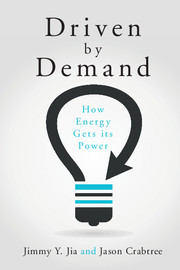Book contents
- Frontmatter
- Dedication
- contents
- List of figures
- List of tables
- Acknowledgments
- Part I Introduction
- Part II Three frameworks
- Part III Critical decisions
- Part IV Energy futurism
- 10 Towards better management of energy infrastructures
- 11 Risk management in energy
- 12 Resilience as a core value
- 13 Exploring energy security
- 14 Energy-as-a-service
- Part V Societal advancement
- References
- Index
11 - Risk management in energy
from Part IV - Energy futurism
Published online by Cambridge University Press: 05 June 2015
- Frontmatter
- Dedication
- contents
- List of figures
- List of tables
- Acknowledgments
- Part I Introduction
- Part II Three frameworks
- Part III Critical decisions
- Part IV Energy futurism
- 10 Towards better management of energy infrastructures
- 11 Risk management in energy
- 12 Resilience as a core value
- 13 Exploring energy security
- 14 Energy-as-a-service
- Part V Societal advancement
- References
- Index
Summary
In the business world, the rear view mirror is always clearer than the windshield.
Warren BuffetModern societies' ability—or, more realistically, their perceived ability—to model and quantify risk remains the central and revolutionary idea that defines the boundary between modern human societies and our precursors (Bernstein, 2007). In the business world, most discussions of risk begin with establishing the likelihood of something occurring in the future, because risk and uncertainty are separated by the notion of an undesirable outcome. The risk stemming from an undesirable or catastrophic event implies an understanding of both the certainty of the event and the cost or impact of the occurrence itself. This is more easily asserted than accomplished in practice. The widely used paraphrase of famous baseball manager Yogi Berra or physicist Neils Bohr is applicable here: “It's tough to make predictions, especially about the future.”
Humans tend to struggle with reasoning about randomness or uncertainty. Many mistakenly overly attribute success to personal accomplishments or skills while assuming that failures were the products of chance, as described at length in Nassim Nicholas Taleb's book Fooled by Randomness (Taleb, 2001). Misuse of heuristics and projection of pre-existing human biases via data is also well documented (Tversky and Kahneman, 1974). Forecasters also commonly underestimate the likelihood of impactful but rare events which Taleb refers to as “black swans” (Taleb, 2007) and others have called “dragon king” events (Gauthier et al., 2013). These low-frequency, high-impact events are hard to predict, although some work has been done with the intent of elucidating hidden organizing principles (e.g. Barnosky et al., 2012; Comfort et al., 2010; Field et al., 2012; Nott, 2006; Gauthier et al., 2013). The dragon king–type statistical distribution closely matches a power law distribution until the “bubbling events” within the complex system cause a sudden increase in high-consequence events.
- Type
- Chapter
- Information
- Driven by DemandHow Energy Gets its Power, pp. 211 - 235Publisher: Cambridge University PressPrint publication year: 2015



